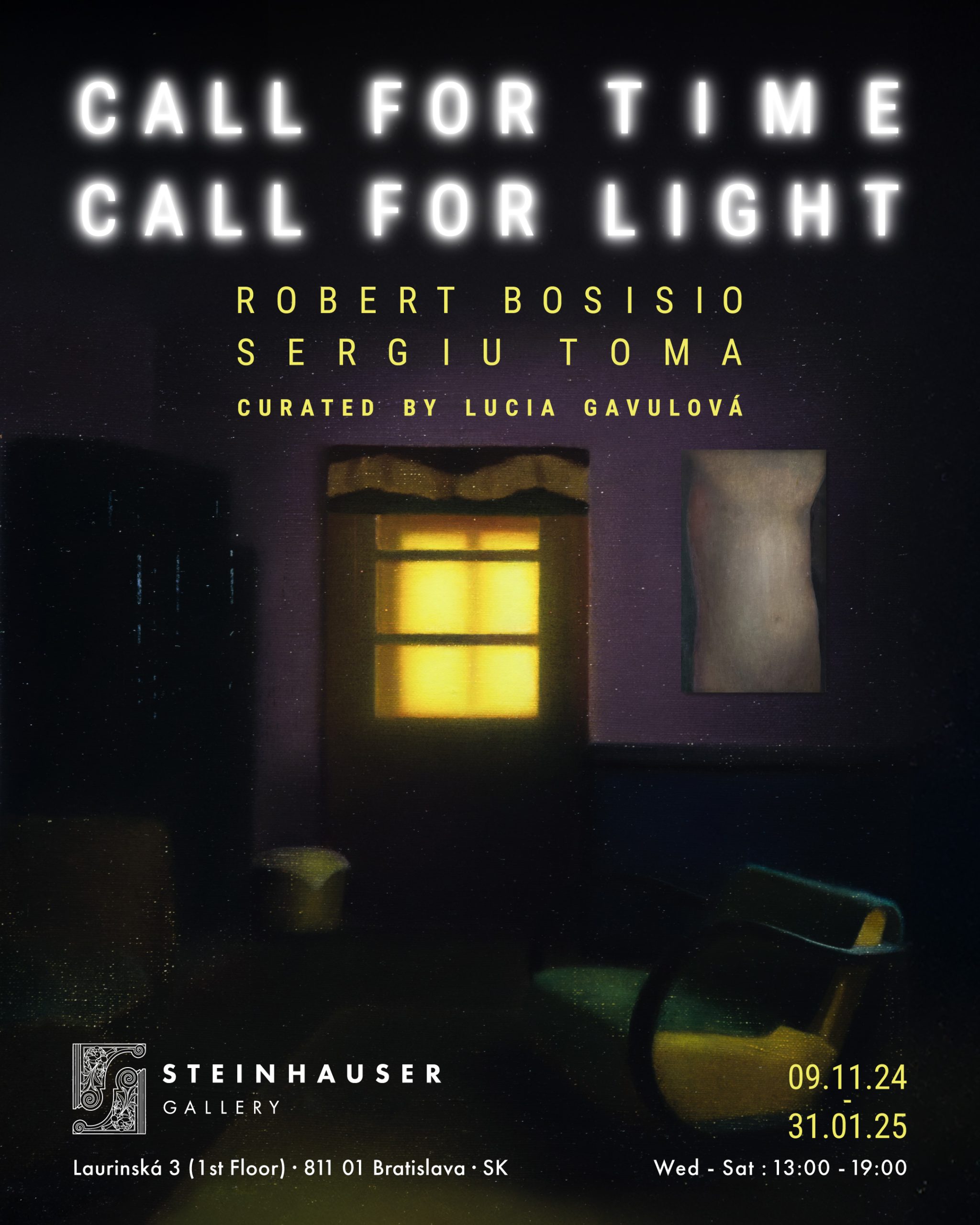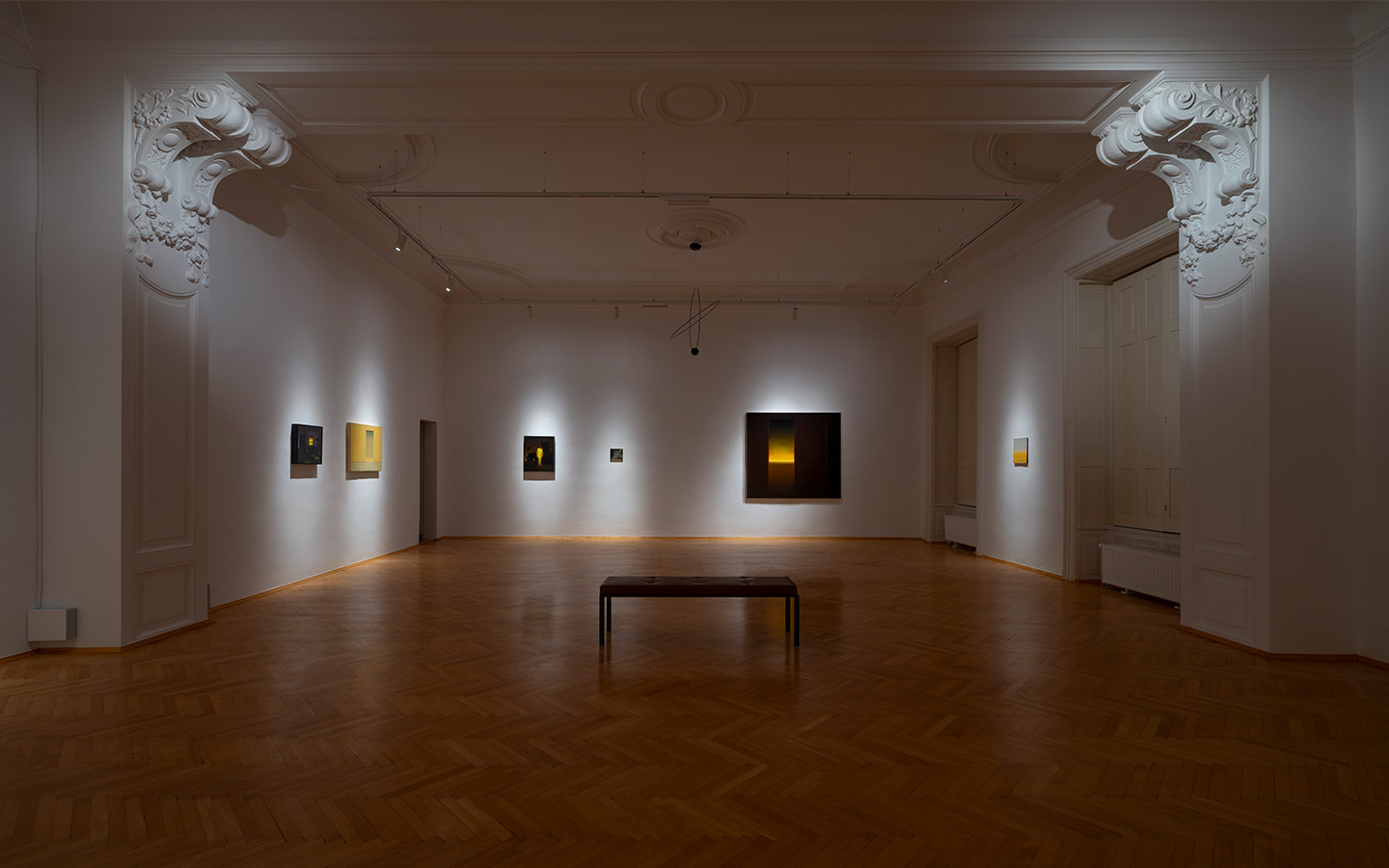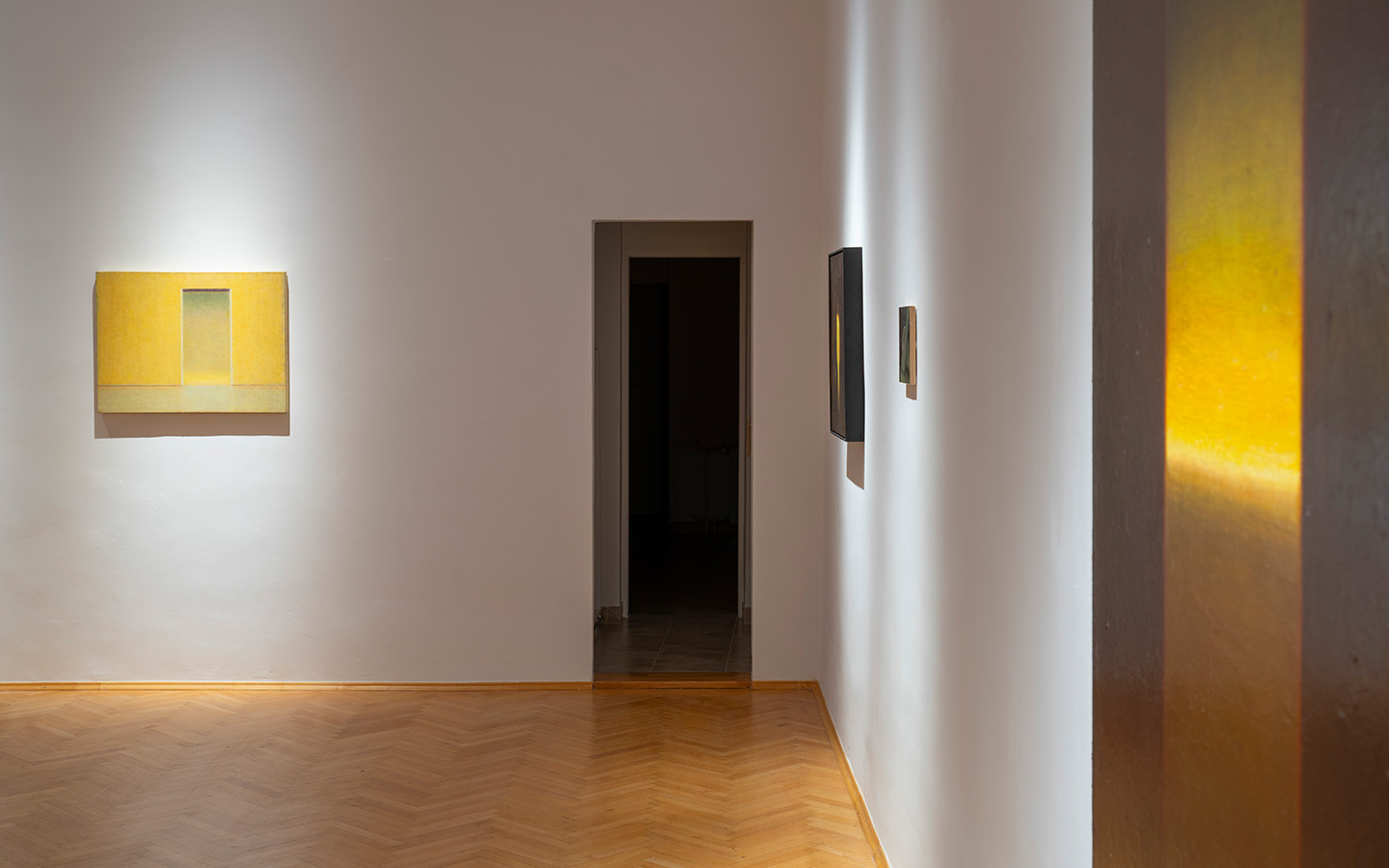CALL FOR TIME – CALL FOR LIGHT
Opening: 08.11.2024

Trodena is a picturesque municipality with a nine hundred years of history nestled within the mountain massifs of South Tyrol. The city of Cluj is the unofficial capital of the historical region of Transylvania in northwestern Romania. The two are 1,469 miles apart. After the fall of Communism, the pristine landscape in the isolation of the Monte Corno Natural Park and the vibrant university town filled with bohemian bars and cafés went through a challenging transformation from totalitarianism to the early capitalism of the new Romanian society, paralleling the changes across the country. The tumultuous times sparked an extraordinary determination among artists, as is particularly evident in visual arts. That has triggered the emergence of a remarkable group of talented artists. Since 2007, they started to refer to themselves as the Cluj School.
Theirs is by no means a stylistically unified movement. It is largely shaped by painters who utilize a darker palette and expressive style, presenting stark images of post-Communist Romania. Trodena and Cluj are highlighted for their profound differences, yet also for the powerful interpersonal bond and friendship between Robert Bosisio and Sergiu Toma. Their connection is further enriched by a shared love for painting. For Bosisio, the passion manifests as silence, metaphysical contemplation and extensive analytical research of recurring themes. In contrast, Toma’s journey is more fraught, marked by burnout from the pressures of artistic creation and a retreat into solitude.
Meeting at an art fair sixteen years ago, the two began to nurture an intergenerational relationship, supporting one another while sharing common ground and perspectives on painting. Sergiu was invited to exhibit in Bratislava by the gallerist Patrik Steinhauser, a bold move considering Sergiu’s two-year hiatus from painting. He agreed on one condition: that he would showcase his work alongside Robert.
Robert Bosisio (b. 1963) works with the act of looking and seeing. Never does he paint narratively, story-wise. His projections of individual brushstrokes onto the canvas are fundamentally abstract, achieving a blurred quality by creating unique textures where he places thousands of tiny brushstrokes or dots one beside another. The effect of light and the varying distances from which the canvas can capture the viewer’s gaze play a crucial role in the result. Robert explores imagery in detail by repeatedly painting the same subjects, such as details of human body, landscapes or transitions through spaces – openings, doors and the like through working with light, shadow, optical and illusory effects. By taking into account all of the above, he builds the result. The initial noise of visual fog from a close-up changes as the viewers work their way to the clarity of the resultant image by moving in space, away from the canvas that comes together on their retina. The fog has confronted Robert’s gaze since childhood: it is part of his DNA forged in the Troden Mountains valley. Its effect, in symbiosis with light, is projected onto his canvases that often achieve a 3D impression. The tension between physical phenomena and painterly finesse creates unusual, appealing beauty. Film director Wim Wenders, Robert’s long-term close friend, owns a collection of his paintings. Wenders has written several poems and texts about Bosisio.
Sergiu Toma (b. 1987) also works with utmost focus on light in the paintings he made after a long break for the exhibition at Steinhauser Gallery. Exploring its effect on the naked human body without intention of an erotic charge, he rigorously analyses luminosity in the reflection of the body surface. Initially, Toma’s paintings were set in the darkened interiors of characteristic Romanian houses on the border between town and countryside. In their forthright stage-like construction of the dreamlike scenes, they reflected post-Communist reality in relation to facts, traditions, folklore, superstitions, memories, and the passage of time. His hyper realistic practices were breathtaking, leaving the spectators speechless. Having drifted towards exterior paintings and a more expressive style – in a desire to break free from established formulas – Sergiu returns to the hyper-realist line and context of the interior, in a preoccupation with research into the optical effects of light. The smaller-scale paintings carry almost a sacred quality, forcing a parallel to Robert’s affinity to grasp being (humans, nature, objects) as such that exists beyond empirically derivable existence. Even at the edges or top of Sergio’s paintings, figurative fog hovers as the author completes the work with thin layers of paint. Unlike Bosisio’s fog, that of Toma tends to be interpreted in earlier paintings as a visual metaphor for the variability of our memory.
The situation of contemporary painting is dynamic and ongoing. The distinction between depicting and non-depicting lacks justification. Both Robert Bosisio and Sergiu Toma are tired of the constant need to contextualize painting within various modern trends, such as the cyclical endings and returns of the medium or its role as a means of appeal, revolution, or conceptualization. In reality, painting has never ceased to exist, nor has it ever returned. It has remained ever-present. It merely shifts in the extent to which it is represented in artistic endeavours, that is the degree to which the painting is legitimized within prevailing contemporary trends.
The parameters of novelty within the self-updating critical discourse are grounded in the automatic comparison of contemporary painting forms with chronological developments in art. Yet, painting itself remains largely a relic of modernism. Nonetheless, the works of Bosisio and Toma do not exemplify the manifestation or avant-garde component. Instead, they distil information overload into a pure recollection of ideas and themes, focusing on the essentials. The role of art and painting in their work is to expand the boundaries of meaning – addressing what can be said and how it can be represented. Their assertion that „the concept kills painting“ reflects their view that conceptual interpretation of painting by contemporary critics, curators, and institutions who align it with current trends or market demands, is irrelevant to them. The two artists have retreated from these contexts into their own realms of quiet continuity in unique artistry, where they support each other amicably, intellectually and collaboratively.
Text: Lucia Gavulová
—
Sources: oral history, research, Vaňous, P.: Painting Today – A necessity, revolt or strategy?
The degree of weaking of authorship as the result of the manipulation with a tendency.
In: Geržová, J. (Ed.): Painting in the postmedial age. Proceeding from an international symposium
















